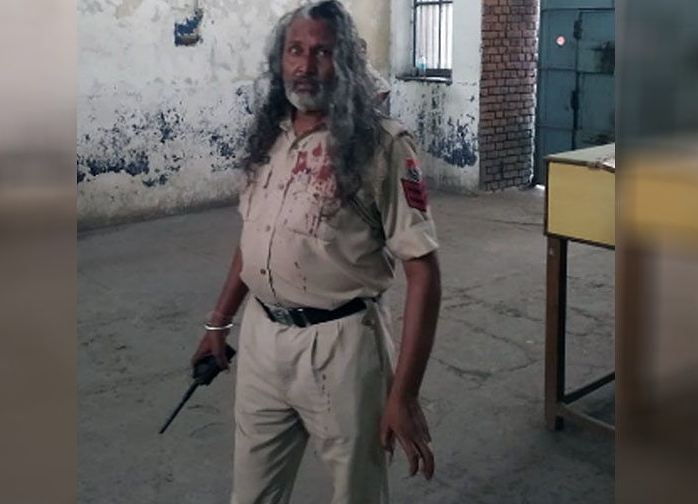The Delhi CM said that the AAP government had written to neighbouring states on what they were doing to prevent crop burning
Delhi Chief Minister Arvind Kejriwal on Tuesday responded to the spike in pollution levels in the city, saying that there needed to be a solution to crop burning in adjoining states.
“Delhi has become a gas chamber. Every year, this happens during this time. We have to find a solution to crop burning in adjoining states,” Kejriwal tweeted.
The Delhi Chief Minister also shared letters the Aam Aadmi Party government had written to the states of Punjab, Haryana, Uttar Pradesh and Rajasthan to curb burning of agricultural residue to control air pollution in the National Capital region.
Kejriwal also said that he would ask Deputy Chief Minister Manish Sisodia, who also serves as Delhi Education Minister, to ask schools to remain shut until the air quality improves.
Earlier, the pollution level in the national capital remained critical on Tuesday morning. Due to smog-like condition on Tuesday the visibility early in the morning remained low, causing problems in movement of traffic.
According to reports, the visibility dropped to 200 metres at 8:30 am.
The average air quality index (AQI) also hit 396 (very poor) at 8am, which further peaked by 9.30am to 403 indicating severe pollution level. AQI in East Delhi’s Dilshad Garden was 420, whereas it was 319 in Anand Vihar.
The pollution was recorded highest in Punjabi Bagh with AQI 999 and 852 in R.K. Puram. The air quality in Dwarka and NCR also hovered between 400-420.
AQI level from 0-50 is considered “good”, 51-100 is “satisfactory” 101-200 is “moderate”, 201-300 is “poor”, 301-400 is “very poor”, and 401 and above is “severe”.
Meanwhile, more than 20 flights are delayed due to runway closure and smog at Indira Gandhi International Airport.
Indian Medical Association (IMA) on Tuesday declared public health emergency in Delhi, due to high pollution level. The IMA has suggested closing down of schools and urged people not to venture out.
In view of the alarming levels of air pollution in Delhi, the Indian Medical Association (IMA) on Monday wrote to Delhi Chief Minister Arvind Kejriwal and Deputy Chief Minister Manish Sisodia requesting to cancel the upcoming Airtel Delhi Half Marathon scheduled for November 19.
In light of the sudden dip, measures under the Graded Response Action Plan (GRAP) such as a four times hike in parking fees may be rolled out by the Supreme Court-mandated Environment Pollution Prevention and Control Authority, reports PTI.
If the situation deteriorates further and persists for at least 48 hours, the task force under the GRAP will mull shutting schools and enforce the odd-even car rationing scheme.
The last time air had turned ‘severe’ was on October 20, a day after Diwali festivities, when firecrackers were set off.
Since then, the pollution monitors have been recording ‘very poor’ air quality, which is comparatively better than ‘severe’ but alarming according to global standards.
A ‘very poor’ AQI comes with the warning that people may develop respiratory illness on prolonged exposure while exposure to ‘severe’ air affects healthy people and seriously impacts those with existing respiratory or cardiovascular diseases.
The CPCB has said high moisture level in the air has trapped emission from local sources and hanging low over the city in the absence of wind.
“Total calm conditions, marked by the complete absence of wind has led to the situation. The moisture has trapped emissions from ground level sources,” Dipankar Saha, CPCB’s air lab chief, said.
According to private weather forecasting agency Skymet, wind from neighbouring Punjab and Haryana, where paddy stubble burning is in full swing, has started entering the city during the afternoon hours.
The CPCB also recorded ‘severe’ air quality in the neighbouring Noida and Ghaziabad.
The real-time pollution monitors displayed the alarmingly high concentration of PM2.5 and PM10, which are ultrafine particulates having the ability to enter the respiratory system and subsequently the bloodstream of humans and animals, causing harm.
The National Green Tribunal on Tuesday directed the state governments of Uttar Pradesh, Punjab, Haryana and Delhi-NCR to send in a report on the preventive steps they have taken to curb the worsening air quality in the national capital.
An NGT bench headed by Justice Swatanter Kumar, the chairperson of the tribunal, pulled the state governments for their poor preparedness in tackling the situation. “The ambient air quality is so bad that the children are not able to breathe properly. Why did you not spray water using helicopters as per our directions,” Justice Swatanter Kumar asked.















